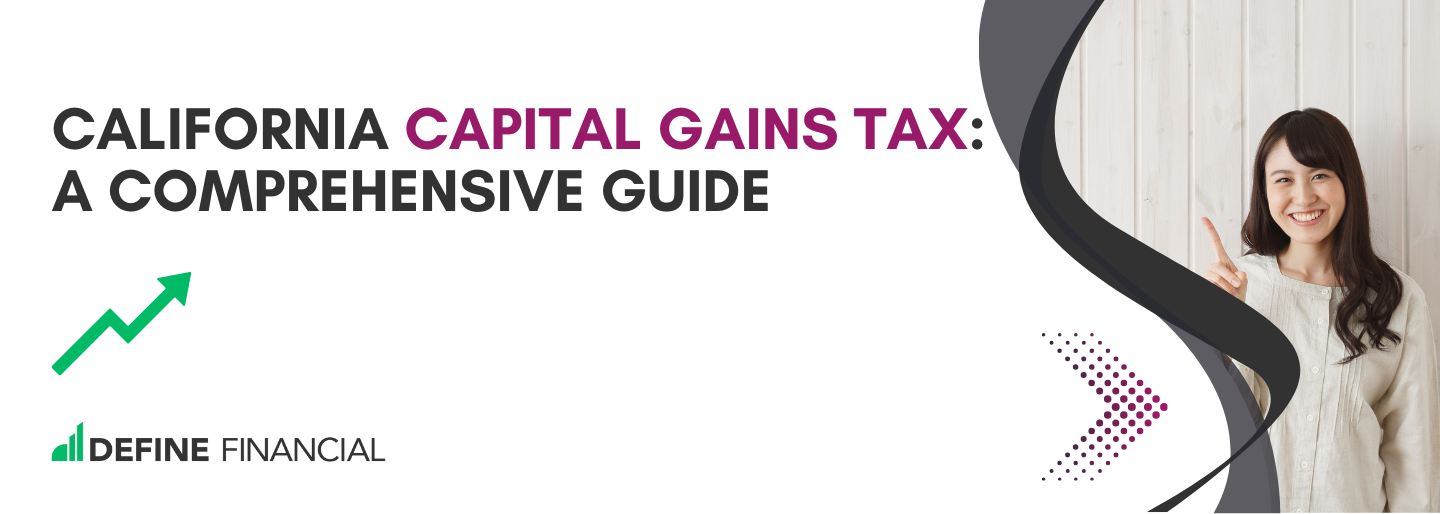
San Diego has long been a magnet for retirees, and it’s easy to see why.
With its temperate climate, beautiful beaches, vibrant cultural scene, and top-tier healthcare options, it offers an ideal lifestyle for those in their golden years.
But paradise comes at a price.
California is known for its relatively high tax burden, and retirees settling in San Diego may be surprised by how taxes can chip away at their hard-earned savings.
From income taxes on retirement withdrawals to property taxes and sales tax, there are several ways your nest egg could face unnecessary erosion.
The good news? With the proper planning, you can take smart steps to minimize the tax bite and keep more of your retirement income working for you.
In this guide, we’ll walk through key strategies every retiree in San Diego should know – from understanding how your income is taxed and leveraging California-specific benefits, to planning your withdrawals and estate with tax efficiency in mind.
Whether you’re already retired or preparing for the transition, this article will equip you with the clarity and confidence to navigate retirement in San Diego on your terms.
Key Takeaways
1. Understanding California’s Tax Landscape
Before exploring specific tax strategies, it helps to get a clear view of California’s broader tax system. For retirees, especially those with multiple income sources, understanding how the state taxes different types of income can clarify where careful planning may make a difference. California’s structure is different from many other states, and it’s worth knowing how those differences could impact your retirement budget.
i. Income Taxes: Among the Highest in the Nation
California has a progressive state income tax with rates ranging from 1% to 13.3%, depending on your taxable income. Unlike some states that offer special treatment for retirement income, California taxes most forms of retirement income as ordinary income. That includes IRA and 401(k) withdrawals, pension payments, and annuity income.
The good news? California does not tax Social Security benefits, a rare break in an otherwise high-tax state.
ii. Property Taxes: Capped Increases, But High Base Values
Thanks to Proposition 13, your property tax rate is limited to 1% of your assessed value, plus local add-ons, and annual increases in assessed value are capped at 2% per year. This benefits long-term homeowners, but if you’re buying a new home in San Diego, especially in today’s high-priced market, your initial assessed value will reflect current market rates.
In San Diego County, the average effective property tax rate is around 0.76%, but this can vary depending on local assessments and Mello-Roos districts.
iii. Sales Tax: A Quiet Drain on Everyday Spending
California’s base state sales tax is 7.25%, and local jurisdictions, including San Diego, can tack on additional percentages. In San Diego, the total sales tax rate is typically around 7.75%, though it may be higher in certain areas.
While this doesn’t directly impact your retirement income, it can reduce your spending power, especially if you’re on a fixed budget.
2. How Retirement Income Is Taxed in California
Retirement income comes in many forms, and in California, most of it is subject to state income tax. Knowing how each type of income is treated can help you plan withdrawals more strategically and avoid unexpected tax bills.
i. Social Security Benefits
California does not tax Social Security benefits. At the federal level, however, a portion of your benefits may be taxable depending on your combined income (adjusted gross income + nontaxable interest + half of your Social Security benefits). So while you won’t owe the state anything on these payments, they may still increase your federal tax liability.
ii. Pensions
Public and private pensions are fully taxable as ordinary income in California. This includes pensions from government jobs, military service, and corporate employers. If you’re receiving a pension, expect to report the full amount on your California return.
iii. Traditional IRAs and 401(k) Withdrawals
Withdrawals from traditional IRAs and 401(k) plans are also fully taxable at both the federal and state levels. Required Minimum Distributions (RMDs) can be especially impactful, as they can push your income into a higher tax bracket even if you don’t need the funds.
It’s important to note that under the SECURE 2.0 Act, the age at which RMDs must begin was increased to 73 starting in 2023, and it will rise to 75 by 2033. This change allows retirees to keep funds invested longer, potentially reducing taxable income in early retirement years.
iv. Roth IRAs and Roth 401(k)s
Qualified withdrawals from Roth IRAs are not taxed federally or by the state. That’s because contributions were made with after-tax dollars. Roth 401(k) withdrawals are also tax-free if you meet the age and holding requirements. This makes Roth accounts a valuable tool for managing your taxable income in retirement.
SECURE 2.0 also expands Roth options, including allowing employers to make Roth matching contributions and simplifying Roth conversions, which enhances opportunities to control taxable income in retirement.
v. Annuities and Other Investment Income
The tax treatment of annuities depends on how they were funded. Annuities purchased with pre-tax funds are fully taxable, while those funded with after-tax dollars are only partially taxed; only the earnings portion is taxable. Interest, dividends, and capital gains from taxable investment accounts are also subject to California income tax, often at your full marginal rate.
3. Investment Income Beyond Annuities
In addition to annuities and retirement accounts, many retirees have taxable investment portfolios generating dividends, interest, and capital gains. These income sources are fully subject to California state income tax at your ordinary marginal rate. Unlike federal tax rates, California does not provide favorable long-term capital gains treatment; instead, capital gains are taxed as regular income. This means gains realized from selling appreciated stocks or mutual funds can significantly increase your tax bill, especially in higher tax brackets.
Managing when and how you realize capital gains can therefore be an important part of minimizing your overall tax burden. Strategies like tax-loss harvesting – selling investments at a loss to offset gains – can help reduce taxable income. Additionally, holding investments longer to defer gains or using tax-efficient funds may provide some relief. Understanding these nuances can help you better coordinate investment decisions with your overall tax plan.
4. Withdrawal Strategies to Minimize Taxes
The order in which you draw down your retirement accounts can have a significant impact on your total tax bill over time. By being thoughtful about timing and account types, you may be able to reduce the taxes you owe—both now and later in retirement.
i. Start with Pre-Tax Retirement Accounts (and Consider Roth Conversions)
Withdrawals should generally begin with pre-tax retirement accounts such as IRAs and 401(k)s. This approach allows you to intentionally fill favorable tax brackets each year. If you need funds for living expenses, taxable withdrawals from these accounts can provide them. If you don’t need the withdrawals, you can still take advantage of lower brackets by converting a portion of your balance into a Roth IRA.
Paying taxes on these conversions at favorable tax rates can reduce the impact of large Required Minimum Distributions (RMDs) later and create more flexibility with tax-free income in the future.
ii. Move to Taxable Accounts
Once favorable tax brackets are filled through pre-tax account withdrawals or Roth conversions, taxable accounts can be tapped if additional income is needed.
Withdrawals of your original contributions are not taxed, while gains may trigger capital gains taxes. Because California taxes capital gains as ordinary income, timing these withdrawals after traditional accounts can help you better manage your overall tax liability.
iii. Preserve Roth Accounts for Later
Roth IRAs and Roth 401(k)s offer tax-free growth and tax-free withdrawals when requirements are met. Keeping these accounts for later in retirement provides flexibility, serves as a hedge against rising tax rates, and offers an efficient way to leave assets to heirs.
iv. Watch for Medicare and Other Income Thresholds
Withdrawal decisions affect more than just taxes. Higher reported income can increase Medicare premiums through IRMAA surcharges and may also influence how Social Security benefits are taxed. Coordinating withdrawals, Roth conversions, and taxable gains within income thresholds helps you avoid unnecessary costs while maintaining flexibility in your retirement plan.
5. The Impact of Inflation on Retirement Income and Taxes
Inflation affects both your spending power and tax planning in retirement. As the cost of living rises, you may need to withdraw more from your retirement accounts to maintain your lifestyle, potentially pushing you into higher tax brackets. California’s progressive income tax system means that even modest increases in income can result in disproportionately higher taxes over time.
Moreover, inflation can erode the real value of fixed income streams like pensions or Social Security benefits, while increasing expenses such as healthcare or property taxes. Being mindful of inflation when planning your withdrawals, tax brackets, and budget can help you maintain financial stability.
Periodically reviewing and adjusting your withdrawal strategy to account for inflation and tax impacts is important for long-term success in retirement.
6. California-Specific Tax Breaks for Retirees
While California is known for its high taxes, several state-specific programs can help reduce the tax burden for retirees, particularly homeowners and those with modest income levels.
i. Proposition 13: Property Tax Limits
Under Proposition 13, annual increases in assessed value are capped at 2%, which helps keep property taxes relatively stable over time, especially for long-term homeowners.
ii. Proposition 19: Property Tax Portability
If you’re planning to downsize or relocate within the state, Proposition 19 may allow you to carry your existing property tax base to your new home. This can be used up to three times if your age is 55 or older.
iii. Senior Property Tax Exemptions and Deferrals
Some counties offer property tax exemptions or deferral programs for qualifying seniors, often based on income and age. These vary locally, so check with the San Diego County Assessor’s Office.
iv. California Senior Income Tax Credit
California offers modest credits for seniors who meet certain income thresholds. While small, they can help reduce your overall state tax bill.
7. Charitable Giving as a Tax Strategy
Giving back can reduce your taxable income when done strategically:
i. Qualified Charitable Distributions (QCDs)
Retirees age 70½ or older can donate up to $110,000 from an IRA directly to charity, satisfying RMDs without increasing taxable income. SECURE 2.0 raised this limit from previous years and simplified the rules for certain distributions, enhancing this tax-efficient giving strategy.
ii. Donor-Advised Funds (DAFs)
DAFs let you make a large charitable contribution for an immediate deduction, then distribute funds to charities over time. Ideal for high-income years.
iii. Gifting Appreciated Assets
Donating appreciated stock avoids capital gains tax and qualifies for a deduction if you itemize, making it more tax-efficient than giving cash.
Another area where taxes and retirement planning intersect is healthcare: an expense that grows with age and can also carry potential deductions.
8. Health Care and Tax Planning
i. Deducting Medical Expenses
You can deduct unreimbursed medical expenses that exceed 7.5% of your AGI if you itemize: Medicare premiums and long-term care count.
ii. Long-Term Care Insurance Premiums
Premiums are deductible within IRS age-based limits. This is especially helpful if paired with other deductible expenses in a given year.
iii. Using Health Savings Accounts (HSAs)
If you contributed to an HSA before Medicare enrollment, funds can still be used tax-free for qualified health expenses in retirement.
iv. Avoiding IRMAA Surcharges
Planning withdrawals and income to stay below Medicare income thresholds can help avoid higher monthly premiums for Parts B and D.
9. Estate and Legacy Planning
i. No State Estate Tax in California
California does not impose an estate or inheritance tax, but the federal estate tax applies to estates exceeding $13.99 million in 2025.
ii. Step-Up in Basis
When heirs inherit appreciated assets, they receive a “step-up” in cost basis to current market value, minimizing future capital gains taxes.
iii. Gifting During Your Lifetime
In 2025, you can gift up to $19,000 per recipient (or $38,000 per couple) without using your lifetime exemption. Strategic gifts can reduce future estate taxes.
iv. Use of Trusts
Trusts can offer tax benefits, asset protection, and privacy. Options include revocable living trusts, charitable remainder trusts, and irrevocable life insurance trusts.
10. Real Estate: Taxes by Neighborhood
i. Mello-Roos Districts
Newer developments often have Mello-Roos taxes, which fund local infrastructure and can add thousands annually to your property tax bill.
ii. Established Neighborhoods
Older areas may have lower effective taxes if the home hasn’t changed ownership recently. New buyers will have their property reassessed at the current market value.
iii. Check Before You Buy
Always review a sample property tax bill or consult the county assessor to understand the full cost of property ownership.
11. Relocation and Residency Strategies
i. Residency Rules
California considers you a resident if your actions suggest it’s your primary home. That includes where you vote, work, spend time, and hold licenses.
ii. Changing Residency
To become a legal resident of another state, you must spend at least 183 days per year there and establish significant ties, like owning a home and using local services.
iii. Selling Your California Home
You may exclude up to $250,000 ($500,000 if married) in capital gains when selling your primary residence, under both federal and state rules.
iv. Balance Financial and Lifestyle Goals
While relocating might lower your tax burden, quality of life factors, like weather, healthcare, and family proximity, may outweigh the potential savings.
There are many moving parts when it comes to managing taxes in retirement. That’s why having a professional in your corner can make a big difference.
12. Work with a Tax-Savvy Financial Advisor
Tax planning in retirement is rarely a DIY job. A qualified advisor can help you:
- Navigate complex rules across income, property, and estate taxes.
- Create a year-round plan to avoid last-minute surprises.
- Coordinate with your CPA or estate attorney for an integrated approach.
Look for someone who understands both the federal and California tax systems and can help you plan proactively, not just reactively.
Retirement in San Diego offers many rewards; however, without thoughtful tax planning, a portion of your income could be lost to unnecessary taxes. From withdrawal strategies and property tax protections to charitable giving and estate planning, there are many ways to minimize your tax burden.
The earlier you begin planning, the more flexibility and control you’ll have. And if you’re unsure where to start, consult with a financial advisor who can help you navigate both the numbers and the nuances of retirement in California.
Taylor Schulte, CFP® is the founder & CEO of Define Financial, a fee-only wealth management firm in San Diego, CA specializing in retirement planning for people over age 50. Schulte is a regular contributor to Kiplinger and his commentary is regularly featured in publications such as The Wall Street Journal, CNBC, Forbes, Bloomberg, and the San Diego Business Journal.



